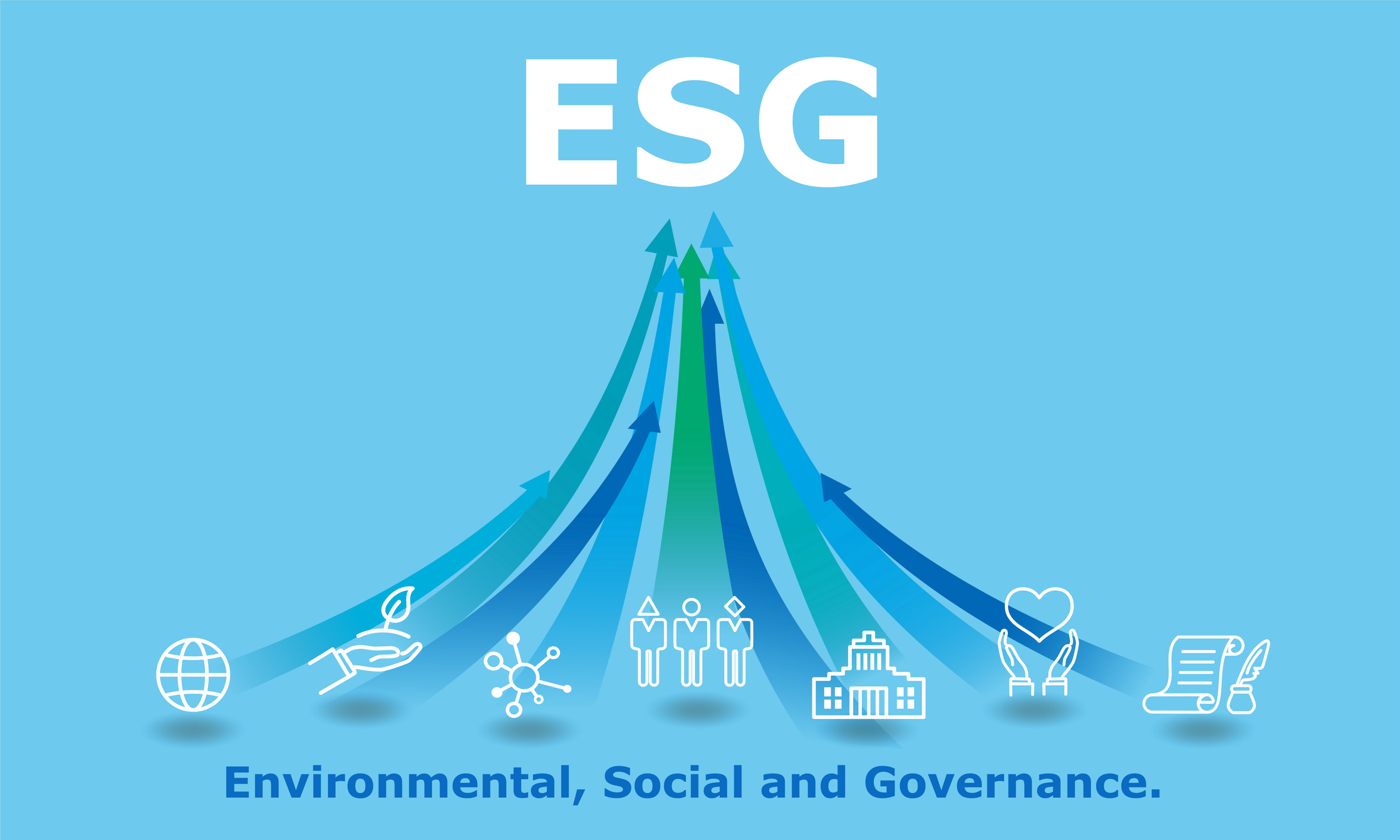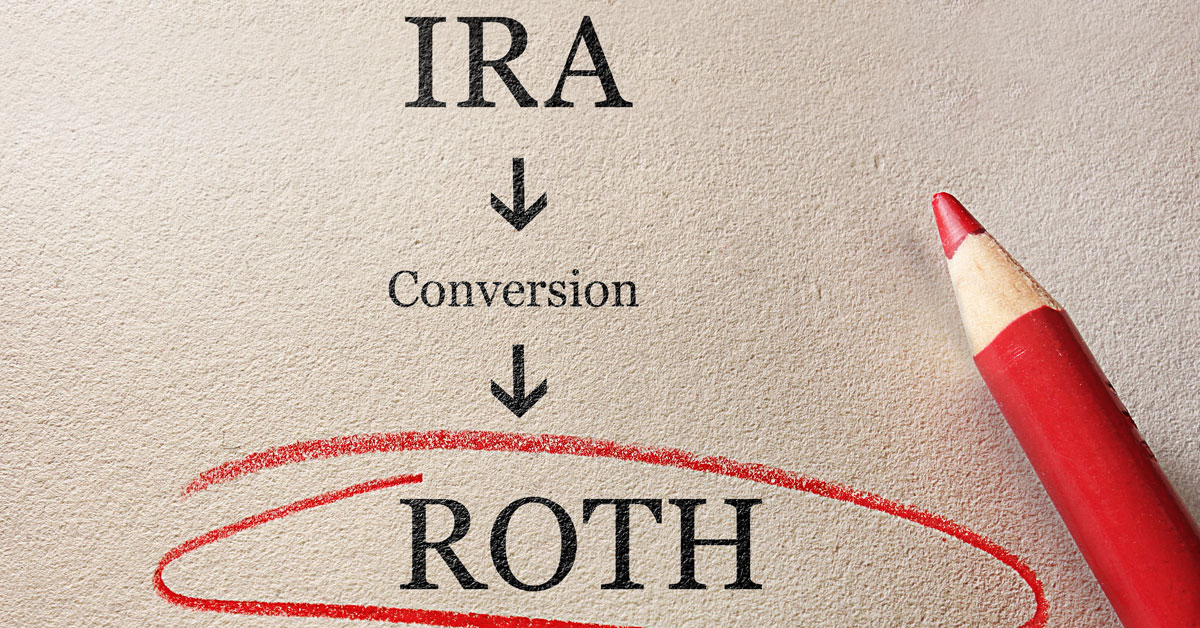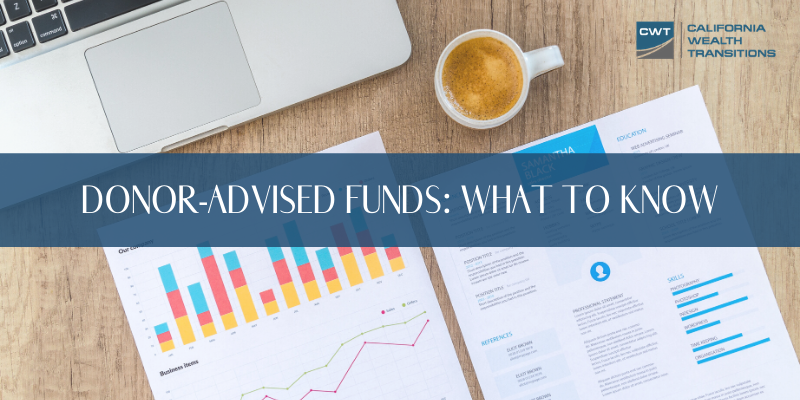Losing a spouse or partner is devastating, and it can be overwhelming trying to make decisions about finances while grieving. Here are some important financial moves you should consider after your spouse dies.
Continue readingESG Investing: Why It Matters Now More Than Ever
With potentially higher returns, lower risk, and the power to do good in the world with your investments, the benefits of ESG investing are clear.
Continue reading5 Things to Do When Retiring as a Single Woman
As a single woman, it can be scary facing retirement alone. Single women face different challenges when retiring, including living longer and needing more financial resources. These challenges require advice for single women in retirement to be different than typical retirement advice. Continue reading to learn what things to do when retiring as a single woman.
Create a Retirement Plan
Having a plan for your finances in your golden years is crucial. No one wants to have to worry about making ends meet when trying to enjoy their retirement. When sitting down to set up a plan, you can find the best opportunities for you and avoid several mistakes. This plan includes at what age you can retire, how much you need to pay yourself in retirement, and what your sources of retirement income are.
Know Your Debt and Expenses
In retirement, you will be living off of a fixed income. To ensure that you will be using your money wisely, you will want to make a list of the debts that you owe and the current expenses you have before retirement. While you are still working, pay off your high-interest debt and begin to account for the low-interest debt that you will continue to pay off in retirement. Go through your other expenses to see where you can lower them to save extra money.
Avoid Taking Social Security as Long as Possible
Social Security is a reliable source of retirement income, but if you delay starting Social Security, you can receive more money. You could begin taking Social Security at the age of 62, but for each year that you wait, your benefit increases. The latest you should begin taking Social Security is at 70 years old because your benefit stops increasing.
Learn about Investing
Leveraging investing to grow your retirement savings is extremely helpful. Women are less likely to invest to avoid risk, but investing can provide a plentiful retirement income in your IRAs and 401(k)s. With women having a longer lifespan, they need to fund a longer retirement. Having a more aggressive investment strategy can provide more money to live off of in retirement.
Prioritize Your Health
One would not normally think about their health during retirement planning. Healthcare costs can be crippling in retirement if not planned for properly. It is inevitable that the older you are, the more expensive your medical bills will be. If you begin to be healthier, you can avoid the expensive medical bills for several years.
Utilizing a financial advisor can help you have a successful retirement plan. An advisor can assess your specific financial situation and provide guidance on how to improve. Here at California Wealth Transitions, we want to help women feel confident in their retirement plans.
Sources:
https://www.cbsnews.com/news/5-retirement-planning-tips-for-single-women/
https://www.approachfp.com/retirement-advice-for-women/
https://rvpllc.com/how-to-retire-successfully-as-a-single-woman/
How Much Is Your Advisor Charging You?
Are you familiar with the fees that your financial advisor is charging you for their services?
Here at California Wealth Transitions we charge a flat percentage rate to manage your investment assets, but not all financial firms operate this way. It’s important for you to know how a financial advisor’s fee schedule is set up when considering starting a new relationship or if you’re in the market for a new advisor, that way you know where your money is truly going.
There are key differences between flat rate fees and blended fees, and the difference between the two can mean more or less money in your pocket. Keep reading for more details on these exact differences.
Flat Rate Fees
If your financial advisor charges for their services based on a flat rate fee schedule, that means they charge you a flat, fixed rate based on your asset level. Every financial advisors’ fee schedule looks like a version of this:
Sample Fee Schedule
$0 – $1mil 1.25%
$1mil – $2.5mil 1.0%
$2.5mil – $5mil .90%
$5mil – $10mil .75%
Financial advisors with this schedule would charge clients with an asset level of up to $1mil an annual fee of 1.25%, clients between $1-2.5 million dollars in assets an annual fee of 1.0%, and so on.
The 1.25%, 1.0%, and .90% are flat rates that do not change. With flat rate fee schedules, clients know exactly what they will pay their financial advisor, no matter what.
In this example, if a client has 3.5 million dollars in assets, they will be charged .90% for the financial advisor’s services ($31,500 annually.) Of course, if a client’s assets increase to the next level of the fee schedule (above 5 million dollars); their annual fee will decrease to .75%. We use this type of fee schedule with our clients.
Blended Rate Fees
A blended rate fee schedule combines annual percentages together into a cumulative fee based on a client’s asset level. Instead of charging a client one asset level percentage, blended rate fees add up the previous percentages as well, hence the term blended rate. Let’s take the same client example from above; Say a client has 3.5 million dollars in assets. On a blended rate fee schedule, the client will be charged like this:
The first $1.0m* 1.25% = $12,500
The next $1.5m* 1.00% = $15,000
The next $1.0m* 0.90% = $9,000
Once you add those amounts together, on a portfolio worth $3.5 million, this investor would be charged $36,500 per year or 1.04% of their assets.
With a flat rate fee, a client with 3.5 million in assets will pay $31,500 annually (0.90%), but with a blended rate fee, that same client pays $36,500 annually (1.04%). The client’s financial advisor will often show the fee schedule to the client and say they are here (pointing at the 0.90% line). However, the client is actually paying over 1%. Rarely ever is this blended fee strategy properly explained to the client, often it is buried in the disclosures section of the initial account opening documents. These dollars can add up to a tremendous amount over the years, especially when you consider dividend reinvestment and compounding interest.
So, we ask again, do you know how your financial advisor is charging you?
We don’t want you to be in the dark when it comes to your finances. If you’d like to know more about the services that we provide here at California Wealth Transitions, contact us today!
Divorcing Your Financial Plan When Your Marital Status Changes
While getting divorced is a very difficult time, there are several other things that will change along with your marital status. You and your spouse’s finances will need to be divided during the divorce, but this is a great opportunity to evaluate your financial standing.
Continue readingThe Five Biggest Mistakes Investors Make
MISTAKE # 1 – Holding Cash
Anyone remember the Aesop’s fable about the ant and the grasshopper? Put briefly, the ant worked hard all summer storing up food. The grasshopper just sang happily at leisure and did no work. Guess who had enough to make it through? To paraphrase pop artist Donna Summer, you work hard for your money. In return, your money should work hard for you.
Although we probably use a plastic card or even an app on our phone to represent it, cash is what we use to pay our common expenses. Beyond the food, clothes, transportation, entertainment and the mortgage that we budget for monthly, it’s a good idea to have an emergency fund of cash on hand to pay for the unexpected car repair, new furnace or medical bill. Depending on your expectation of income stability, that emergency fund could be anywhere from 3-6 months’ income coverage. But once you’ve got that secure, stashing more in cash is actually a bad idea.
There is a common misperception that cash is safe in the sense of protecting your principal. If I have $50,000 in the bank today and I don’t spend it, I’ll have $50,000 next year and $50,000 twenty years from now. The problem is just that. While I will have the same amount of money in nominal terms, my twenty-years-from-now $50,000 will not buy the same thing that my $50,000 will buy today, due to the erosive power of inflation. In fact, at just 2%-per-year average inflation, my future $50,000 will only buy the equivalent of less than $34,000 of goods and services. If you leave a significant portion of your retirement funds in cash or cash equivalents like marginal-return bank CD’s, inflation is going to erode your purchasing power over time.
Some people hold on to too much cash because they fear the market. Some people have analysis paralysis and are always looking and waiting for the non-existent perfect investment. Either way, by holding cash, you are losing money.
MISTAKE #2 – Failing to Consider Fees
If some people overthink the kind of investment to make, many people underthink the question of fees. There is a whole debate about actively managed versus passively managed mutual funds out there. Active funds pay one or (usually) more fund managers to determine their fund’s mandate, conduct research, and buy and sell stocks according to which they expect to perform best within that mandate.
In addition to the cost of paying the managers, there are the transaction costs for buying and selling the stocks. Passive funds are designed to mirror an index and simply purchase the same stocks that comprise the index in the same proportions. No one is paid to do research or make decisions, and since index composition changes rarely, transaction costs are low.
The debate hinges on two questions:
- Do active managers choose better stocks for their funds, causing the funds to generate higher returns?
- Do the higher fees that result from paying the managers and making more transactions effectively obliterate the higher returns?
The answers are not consistent from year to year or across different fund comparisons. However, historical performance demonstrates that active management only generates excess returns-that is, returns beyond what a comparative index generates–in SOME years. Despite this, as an investor, you are still assessed the higher fees EVERY year. So, the probability of getting higher returns from your active investments varies from year to year, but the probability of paying higher fees on those investments is 100% every year. I’ll let you draw your own conclusions.
Admittedly, reading a mutual fund prospectus can be less easily enlightening than reading your auto manual, but happily, Morningstar and other reporting services put fees and other information on the Internet. Or, you can just ask your financial professional for a one-pager on each fund.
If your money is managed or advised by someone other than you, you also have to consider management fees. Money management is a service and you should pay something for it since it frees up your time to get paid to do something else. But make sure you are getting something in return for the fee. Compare rates and services. Do not confuse investment or money management with financial planning. Investment management is a process of selecting a portfolio of investments that are suitable for you and advising you when to buy or sell parts of that portfolio, based largely on external circumstances. Financial planning is a much more comprehensive process of defining multiple and often interdependent financial goals and developing, implementing and monitoring strategies to reach them, according to both your personal circumstances and external circumstances. Make sure you know which one you are paying for and which one you are getting.
For those who invest in individual stocks and bonds, the question there comes down to transaction costs. Go with a low-cost brokerage. Although these days, competing companies are bidding each other down, so this is less and less of an issue.
MISTAKE #3 – Timing the Market
Regardless of whether your advisor is a money manager or a financial planner, and regardless of the nature of that person’s compensation, one of your advisor’s tasks should be preventing you from trying to time the market.
I say “trying” because no one is actually able to do it.
Timing the market means buying just before the market rises and/or selling right before it declines.
There are a myriad of factors that cause market movement. Some are rational, some are not. Some can be analyzed to a certain extent, and some cannot. However, NONE can be predicted with frequent-enough accuracy for market timing to succeed more than it fails. In addition to the likelihood that you will “miss the window” to time the market, attempting to do it will generate unnecessary transaction costs. Particularly with the growing volume of robo-trading, engineered by super-computes, the market frequently moves too fast. Once you notice the direction, it’s often too late to benefit from following it.
Over the long run, the stock market will go up. In the short run, it will have varying degrees of up-and-down volatility. Buy-and-hold, as tired as it seems, really is the most efficient way to go. Periodic rebalancing will keep your portfolio mix in suitable proportion, but the rebalancing should take place according to pre-set considerations rather than the market’s bull or bear sentiment.
MISTAKE #4 – Ignoring Liquidity
Probably every financial professional has had the client that either comes with investments that are not commonly traded securities (stocks and bonds or mutual/index/exchange-traded funds comprising stocks and bonds) or expresses a strong interest in them. Such investments include everything from real estate to energy sources to livestock and commodities to crypto-currencies (such as Bitcoin) to antiques, collectibles and art.
Unless you or your advisor happens to have professional experience in the relevant industry, it can be very difficult to accurately assess these investments in terms of risk versus reward-in other words, are the possible returns you might get on this investment a good trade off for what you could lose from this investment? One criteria, though, is very easy to investigate and ought to play an enormous part in the decision to purchase any investment. That is: Liquidity.
Suppose you have two children. You don’t like or trust the stock market, but you have a fondness for real estate. So, you purchase two investment properties. Your plan is to sell the properties as each of your children approaches college age, and to use the properties to fund their higher education. The potential pitfall to this strategy is not just that the local real estate market might take a downturn. The same thing could happen with the stock market. But in the event of a downturn, real estate can be much more difficult to sell than securities. Even in a good market, it can take months to sell a highly desirable property after inspections and showings. And although you can liquidate a security portfolio gradually, giving the market at least some chance to recover, you generally cannot sell just part of a building.
Many of us have had the experience of purchasing collectibles-coins, figurines, stamps, baseball or Pokemon cards, porcelain dolls, vintage toys or Beanie Babies® to name a few-with the expectation that the price will rise and that there will always be a ready market, only to find the popularity of and interest in the item dropping off a cliff and prospective buyers vanishing into thin air. An investment is only valuable if someone is willing to buy it from you for the cash you need to pay for your children’s education or your own retirement or long-term care. Ebay and Amazon can greatly broaden your potential customer base, but even these sites cannot create a market, and liquidity, for something that no one wants anymore.
MISTAKE #5 – Failing to Understand the Product
Annuities are a lot like certain sports teams or politicians in that many people either love them or hate them with either emotion taken to the extreme, so I’m using this as my product example.
There probably are some really bad annuities out there. But for the most part, annuities are not intrinsically good or bad. What they ARE is misunderstood. Annuities are basically an investment wrapped in insurance. To the best of its corporate ability, an insurance company guarantees you, the annuity owner, some aspect of your investment; for example, how much it will earn, how long it will last, or the maximum that it can decline. Your homeowners, auto, health and life insurance are not free. So, neither is this insurance on your investment. Annuities do certain things that other investments don’t or can’t.
If you want to make sure your money lasts a long as you do, an annuity can do that. If you want to make sure that your principal will stay intact or that your heirs will get a certain amount of money, an annuity can do that. If you want to find a way to defer taxes after you’ve maxed out your retirement plans, an annuity can do that too. However, there is a charge for each of these features. And generally, there’s a charge for not holding the annuity for a certain minimum period. Annuities are not truly liquidity-challenged as discussed above. You can get your money out at any time, but you may pay a hefty charge to do so.
Annuities, permanent life insurance, financial derivatives (options, swaps, collateralized debt and the like) and Master Limited Partnerships (MLPs) are just some of the more complicated investments available. Each of them serves a kind of need and sometimes the need is the kind you have.
To avoid mistakes you need to be sure:
- What the investment does.
- Whether you need or can benefit from what the investment does.
- How much it will cost you to meet that need or obtain that benefit.
Another of Aesop’s fables is “Belling the Cat”. Certainly, if you are a mouse, tying the bell on the cat represents an excellent investment. But what is the cost of approaching the cat to tie the bell…?
Copyright © 2018 PreciseFP. All rights reserved.
This communication is general in nature and provided for educational and informational purposes only. It should not be considered or relied upon as legal, tax or investment advice or an investment recommendation, or as a substitute for legal or tax counsel.
What Is a Roth Conversion and Is It Right for Me?
When it comes to our retirement funds, we are always wondering what the best plans are. Should you have a traditional IRA? Your 401k? Can you open a SEP IRA? Well, those questions depend on when you want to pay taxes, how much you plan to save, how you want to invest the money, and many other considerations. In this article, we are going to go over what Roth conversions are and narrow down if a Roth conversion is a good option for you. Keep reading to learn more!
What is a Roth Conversion?
A Roth conversion simply means taking some or all of your pre-tax money in an IRA account and moving it into a Roth IRA.
Why Would You Convert?
Converting money from a Traditional or Rollover IRA to a Roth IRA changes the tax status from tax-deferred (pay taxes when you take the money out of the account) to tax-free. Your withdrawals from a Roth later on in retirement incur no income taxes, money you take from a Traditional IRA or 401k does incur income taxes.
Depending on how much you have earned in a given year, withdrawals from a traditional IRA will require you to pay tax on the amount you withdraw.
With a Roth IRA, your withdrawals are all tax-free.
With a Traditional IRA, you have to take required minimum distributions (RMDs) each year after age 72 even if you do not need the money, which means you may have to pay taxes on money you don’t even need down the road. Roth IRAs do not have any RMDs, meaning you do not have to withdraw any if you reach a certain age but rather your money will continue to grow tax-free.
So why not put all of your money into a Roth? Tax deductions and IRS restrictions will prevent you from this, but there are ways to build up a large Roth account, one of which is by converting a Pre-tax IRA to a Roth IRA.
Things to Consider
There are numerous factors to consider when trying to decide if a Roth conversion is right for you. You will want to really look into your current circumstances and discuss them with a financial advisor to ensure you get the most information possible prior to making the conversion to ensure it is best for you and your financial future.
Here’s an example where a conversion would make sense. Let’s say you have recently retired, but have not begun receiving social security income, chances are you’ll be reporting very little taxable income to the IRS. If this is the case, and you have a large IRA account, you could convert a portion or all that account to a Roth IRA this year. The amount you convert will be considered taxable income.
In this example, let’s assume you have no other income for a given year and you are married, you could convert up to $19,750 from an IRA to a Roth, that $19,750 is reported as income for the year and becomes tax-free for life. Because you aren’t working or earning income, your tax rate would be at the top of the 10% federal tax bracket and you would owe very little income tax.
You could additionally convert another $60,500 which would increase your annual taxable income to the top of the 12% federal tax bracket. You would incur 12% taxes on the additional $60,500.
That’s a total of $80,250 that you’ve converted that is tax-free for life and after your deductions will only cost a minimal amount in owed taxes. Now let’s say you retire at age 60 and don’t take social security until age 70. That’s 10 years of little to no income that would allow you to convert a ton of money from an IRA to a Roth with little tax implications.
Now, this is a simple example and determining whether or not a Roth conversion is right for you is a more difficult calculation. In the long run, tax-free growth in retirement does sound pretty nice, but you will need consult with a professional to make sure you are facilitating it correctly and avoid and adverse tax consequences.
California Wealth Transitions is here to help. Give us a call at 858-707-7739 (San Diego) or 714-332-2910 (Brea).
Sources:
https://investor.vanguard.com/ira/roth-conversion
https://www.fidelity.com/viewpoints/retirement/roth-ira-conversion-after-50
How Donor-Advised Funds Can Save You Tax Dollars
If you are a charitable investor, a donor-advised fund may be the solution you’ve been looking for. When it comes to the different ways to donate to charity, most people do not know what donor-advised funds are or how they work. Most importantly, many people don’t know how the use of donor advised funds can potentially increase your tax savings over a regular charitable contribution.
For those looking to reduce their taxes in the current year, donor-advised funds are a great way to give back. This type of account allows you to contribute to nonprofits while receiving an immediate tax deduction. Keep reading to learn the basics of donor-advised funds and how to maximize your tax savings.
First, What Are Donor-Advised Funds?
Donor-advised funds (DAF) are a great way pledge assets to charity in the future while instantly receiving a tax deduction. Likewise, “the donor-advised fund essentially functions as a conduit, where the donor receives a tax deduction when the money goes into the DAF, but has discretion about when the assets will finally leave the DAF and actually go to the charity… and in the meantime, assets inside a donor-advised fund grow tax-free,” (Kitces).
While making it easy and quick to contribute and receive a tax deduction, you still must make sure you do your proper research on which donor-advised fund you choose to donate to. Regardless of which donor-advised fund you choose, you will have to pay some fees and expenses depending on the type of charity or nonprofit. The types of charities you can choose to donate to must be IRS-qualified public charities with grant recommendations from the DAF. When you choose a charity, you also have the choice of whether or not your donations will be anonymous, and you can also include a specific purpose or relay a message (i.e. in memory of, in honor of) when donating.
The types of donations you can contribute include cash, checks, publicly traded securities or mutual fund shares, shares of a privately held business, restricted stock, cryptocurrencies, and more. Accepted donation types is determined by the management team of the donor advised fund you select.
So, How Can Donor-Advised Funds Save Me Tax Dollars?
Consider an example, you are charitably inclined and want to contribute $50,000 to charity later this year. You have $50,000 in cash in a savings account and a large investment portfolio. One of the stocks you own has doubled and grown to $50,000 in your investment portfolio. So which do you donate?
You would be subject to capital gains tax if you sold the shares, so you don’t want to sell the shares and contribute the proceeds, you should just contribute the cash in your savings and keep the shares invested right?
Wrong! By using a Donor-Advised Fund you can donate the shares without having to sell them. Therefore, it makes good financial sense to donate the appreciated investments rather than donating $50,000 in cash. By donating stocks instead of cash, you can potentially eliminate the capital gains tax while becoming eligible for a charitable tax deduction equal to the value of the securities. The best part? You can transfer that $50,000 in cash to your investment account and repurchase the same shares you just sold, eliminating the capital gain while keeping the position in your portfolio.
There are other smart money strategies around DAFs such as incorporating it into your investment portfolio’s rebalancing schedule, contributing a highly performing stock and then immediately repurchasing the same shares to avoid the gain as we mentioned above, pre-funding a donation in a high-income year to offset ordinary income taxes, etc.
The sale of a business is a great opportunity for a strategy like this as the year you sell your business is most likely the highest income year of your life. If you were to set aside shares of the company prior to the sale, you could fund a lifetime of charitable giving for you and your family while avoiding capital gains tax on those shares.
Because the rules around donor-advised funds can seem complicated, we are here to help you figure out the best plan of action for your personal situation, all while giving to a good cause. If you would like to speak with an advisor about how you can begin taking action or if you need recommendations for donor-advised funds in Southern California, click here to schedule a quick introductory call.
Fidelity. “What Is a Donor-Advised Fund?” Fidelity Charitable, 2020, www.fidelitycharitable.org/guidance/philanthropy/what-is-a-donor-advised-fund.html.
Kitces, Michael. “Rules & Strategies When Using Donor-Advised Funds.” Nerd’s Eye View | Kitces.com, 1 Feb. 2019, www.kitces.com/blog/rules-strategies-and-tactics-when-using-donor-advised-funds-for-charitable-giving/.
Time Management: A Superhuman Skill
Our entire lives have been turned upside down by Covid-19. What we weren’t prepared for, among other things, was the loss of routine. In an odd way, our sense of stability is related to the familiar. It may be chaotic – racing the clock to get out the door, make it to work on time, meet our deadlines, and return home to put kids to bed or eat dinner with our family – but there is something sacred and deeply fulfilling in the mundane details of daily life.
However, the majority of us have felt overwhelmed from the perpetual fast pace.
For years we have said, “I’ll get to it when I have time.”
“I’m just too busy to fix the fence.”
“I’ll pick up that hobby again when work slows down.”
While this article isn’t about the Coronavirus, we have to admit it has had an impact. It turns out that busyness was a bit of an excuse. When our family’s schedules went out the window, we breathed a sigh of relief those first weeks. Such calm. Slowing down felt like a luxurious vacation. No extra meetings. No running out the door for sports games. No rushing around in order to get everybody where they need to be.
Everything stopped.
After those first few days, if your family is anything like mine, our productivity took a nosedive, despite our best efforts to structure the day armed with charts and plans. Dishes didn’t get washed. Beds weren’t made. Working remotely was a much bigger challenge than anticipated. How did time simply evaporate? What was going on? I had no other obligations. So why couldn’t I seem to find the time to get things done?
In finding a new normal, I learned so much about myself and time management. This is one leadership quality I thought I had mastered, but there’s nothing like a global pandemic to reveal our flaws.
Time management truly is a superhuman skill. If you’ve experienced some of the same difficulties I described above in your own family, or even if you haven’t, be proactive and learn from me! Here are a few time management principles to apply in both your professional and personal life.
Set Boundaries.
Nothing derails time management like ambiguity. Many people lose hours simply because they don’t have clear expectations. This goes for both work and home. Do you know when you’re expected to answer emails for work and when you are clearly not on the clock? Do you have set hours for spending time with your children or family, where nothing else can intrude? If you’re an entrepreneur, this can be a difficult reality to master.
Don’t allow other people to make crucial decisions for your business. Setting boundaries takes intentionality and forethought, but determining when you’ll complete tasks and how you’ll complete them can be life changing. Yes, it’s okay for your business life to integrate with your personal life, but that doesn’t mean it needs to take over. An effective strategy can help you define boundaries that will set you free and in turn help your business to flourish.
Manage your Calendar – Guard your Time!
Setting clear boundaries is really the key to managing your calendar well. Have you ever had a week where you began with nothing on your calendar and suddenly it was full to the brim – meetings, responsibilities, and extra projects piling up?
Learning how to say no is empowering. Before you start accepting requests for meetings and helping others or even social engagements, decide what is important to you. There are certainly some “have-tos” on your list, but be sure to leave room for the things YOU want before you start giving your time away. We’re talking about determining what your priorities are. There is only so much time in a day and you can’t manufacture more. Set aside a little time each week to create a reasonable list of your priorities. Include work and your obligations.
Find Ways to Optimize.
If you’re a manager, an executive, or an entrepreneur, you wield power.
How much time do you think is wasted in a week? Are you constantly sitting in a meeting that is going longer than scheduled, consequently making you late for your next meeting? It’s a vicious cycle we’re all familiar with.
One remedy is to keep track of your time for a few weeks. Just jot down each hour what you are doing, and take time to review. Where can you find opportunity?
Chances are, there are meetings that could be accomplished in much less time. You’ll find you got lost in your inbox, or stuck on a phone call.
Americans spend nearly 28% of their workweek in their inbox. (https://www.mckinsey.com/industries/technology-media-and-telecommunications/our-insights/the-social-economy)
How?!
If you’re struggling to keep up with the volume of email while working either in the office OR at home, you’re not alone.
Schedule a hard 30-minute deadline for shorter meetings. Leave a buffer in between meetings you know run long. Set a limit on how many times you check your email per day, and stick to it. This can optimize your work hours, but it works for your personal life too. Find out where you lose time scrolling on social media or stuck on a phone call, then make a change.
Focus.
This is one thing all the experts agree on: when you are setting goals, you have to make them smart. No one understands this better than finance experts. For example, if you want to have X number of dollars in assets – what do you do first? Now what? Stating a big “hairy audacious goal” (https://www.jimcollins.com/article_topics/articles/BHAG.html) involves more than simply stating your desired end result. Finance experts know what it takes to stay the course – and make adjustments as you go, and celebrate every step that gets you CLOSER to your goal. That’s the key. If you’ve got something you want to accomplish with your time – write that novel, finish working on that antique project car, move to your dream location – then you have to figure out smaller sub goals to help you get there. If you want to write a novel, maybe commit to a word count per week. Get specific and get serious!
As they say, “hope is not a strategy.”
Pay Attention to your Energy Levels.
It’s perfectly fine if you’re not the kind of person who rolls out of bed at 5 a.m. charged up and ready to go. Trying to run 5 miles before 7 a.m. might not be the right goal for you. People who have mastered time management understand that they should work with their natural rhythms, and play to their strengths. Don’t waste time fighting it if it’s not right for you. Reasonably manage your time. If your peak energy level is at 10 a.m., program your day with the toughest work you have to tackle in that time slot. Figure out when you are most productive, and design your day around it.
If you have the tendency to be a taskmaster and skip lunch and breaks, you’ll burn out (and your time management strategy will never stick!) Take breaks. It’s proven to boost productivity. Walk away from the project, the desk, or the to-do list for a moment. (https://executive.mit.edu/blog/want-to-be-more-productive-in-2018-take-more-breaks) If you know your habit is to take an extended break and not make it back to the desk, don’t allow yourself to get caught. Put 15 minutes on the clock and be intentional with your playtime until you need to get back at it.
For more advice on managing your time and your money, talk to one of our advisors today.
When Is the Right Time to Take Out Social Security?
Your ability to start taking Social Security starts when you turn 62 years old. The latest you can delay taking Social Security payments is when you turn 70. This leaves you with the question of eight years of when should you start your monthly payments. If you haven’t consulted with a Financial Planner and have questions about your situation, we urge you to please contact us here.
Firstly, it’s important that you understand how the system for payments works. If you begin taking payments before your full retirement age (which can currently fall anywhere between 66 and 67 dependent on the month you were born) then those payments will be permanently reduced. On the flipside if you wait until after your retirement age up to the age of 70 your payments will be permanently increased on a scale dependent upon when you start taking them. Your monthly benefit payment is increased by 8% guaranteed every year that you delay payments.
After learning this the most obvious thing to do to get the most out of the system might seem to delay taking payments for as long as possible, but this is not necessarily true. Like many financial decisions the right time for you to start claiming depends largely upon your unique financial situation. The most obvious answer to the question would come in the form of need. If you need the money then start claiming it as soon as that need arises. If, however, you have other forms of income (investments, rental properties, annuity income, pensions, etc.) that are providing the lifestyle you want for your retirement then you should consider delaying taking payments. So where is the breakeven point and how do we calculate it?
Life Expectancy
Your own life expectancy is an impossible thing to predict accurately, but having a vague idea in your mind can help you to decide when you want to begin your Social Security. Waiting until you’re 70 to start taking higher payments only works well for you if you are alive long enough to enjoy the extra money. The current state of your health, history of disease in your family, your parents age when they died are all good starting points to give you an idea of if you think waiting to start your Social Security will work well for you.
Investment Opportunities
If you have a proven track record of being able to invest wisely enough that you can earn a higher rate of return than 8% annually, then taking your benefits early might work really well for you.
Consider this example, your social security income will increase by 8% each year you delay. If you are able to invest a retirement account and achieve a rate of return higher than 8%, you should consider taking your social security earlier as your retirement account will grow more quickly and be able to generate more income down the road.
Achieving a long term rate of return greater than 8%, however, is very challenging in our current market environment. Back in the 80’s when you could buy bonds that paid 10% interest, this might have been a safer bet, but in today’s market, you would have to be allocated completely to stocks which may require greater risk in your investments than you are comfortable taking on.
Spousal Support
When you or your spouse die the other is entitled to keep receiving the Social Security payments that are the higher of the two. Therefore if you are the higher earner in the house and you wait until 70 to receive your payments that means both you and your spouse will be entitled to that money no matter what happens to you. You should consider if it makes financial sense for at least one of you to allow those payments to grow over those extra 3-4 years until you hit 70.
If you are unsure of when the ideal time to begin taking social security is for your situation, please contact us here, and one of our advisors will reach out to you. We would love to run a breakeven analysis for you to make sure you’re making the smart decision with your money.











